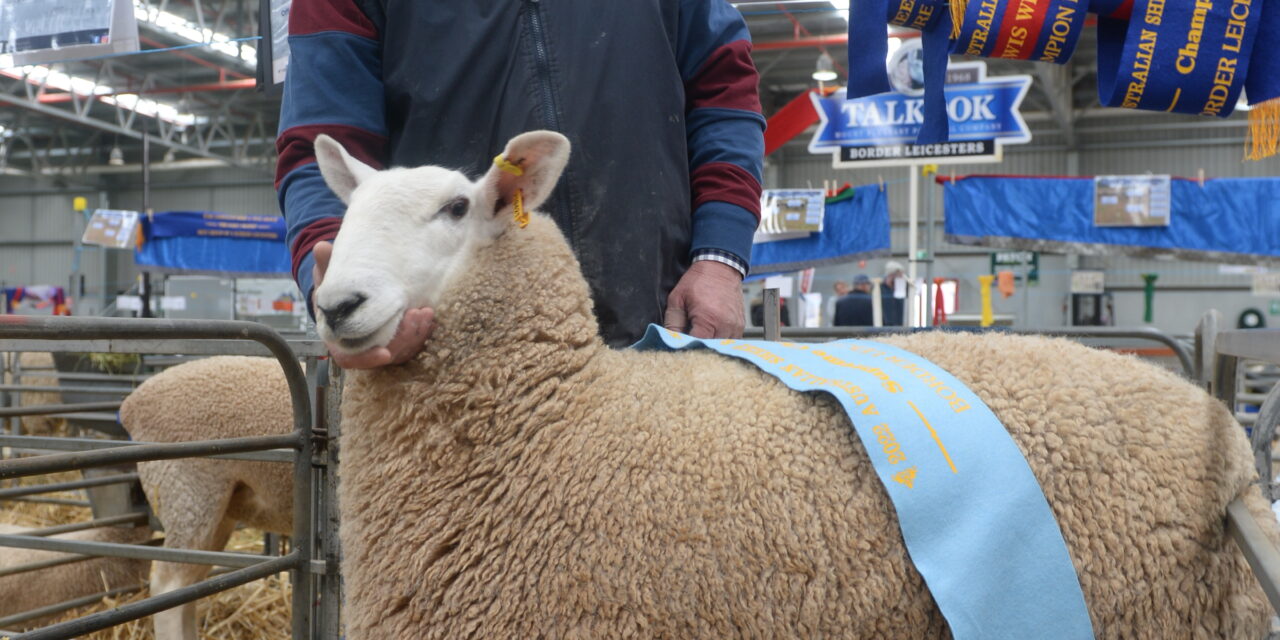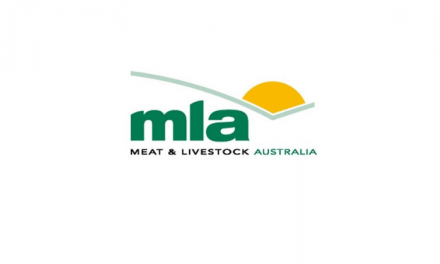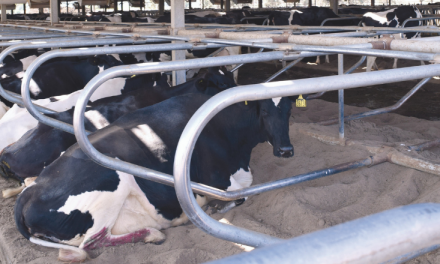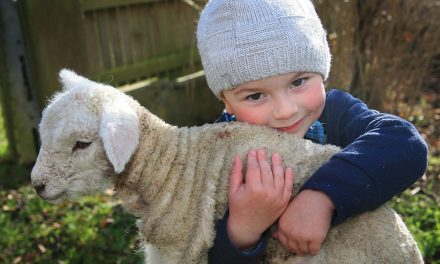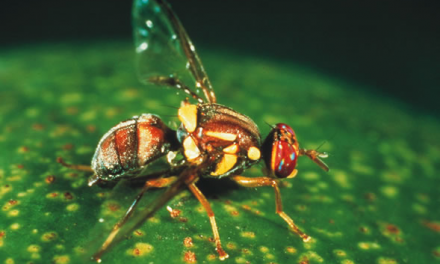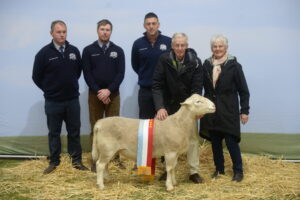
The Australian Sheep and Wool Show’s innate sense of dramatic flare struck again this year, with the final hours of the three-day event overshadowed by a torrential thunderstorm. DANEKA HILL was there.
Crowd numbers were sightly down at the 2022 Australian Sheep and Wool Show, held in Bendigo in central Victoria from July 15 to 17.
But for the diehards and farmers it was hard to notice the dip in foot traffic — places like the Merino display marquee were at maximum capacity.
Many were excited to be back after the show was called off in 2020 and cancelled at the last minute in 2021 due to a snap COVID-19 lockdown.
Grace Knitwear creative director Robyn Betts said the crowd was moderate.
“That’s because the tickets had to be pre-sold and we don’t have the impulse visitors who decide on the day,” the Violet Town local said.
“So we lost some blow-ins and casuals, which we felt (in the craft pavilions), but the farmers still saw the same interest from the serious attendees.”
East Loddon Merino Stud principal Tom Hooke has been attending the Australian Sheep and Wool Show since he was a kid and said numbers might be down, but the people who mattered still came.
“We’ve gotten a lot of good, genuine interest and we’ve been able to engage with current clients and possible future clients,” Tom said.
“We’ve seen a shift this year towards the non-mulesing. We’ve been breeding towards non-mulesing for 20 years so we’re well placed.”
The East Loddon Merino Stud has also eliminated wrinkled skin in their flock by working with SRS (soft rolling skin) genetics.
Wrinkle-free Merinos are less susceptible to fly strike and shear more easily.
Anna Toland and Simon Riddle from Toland Poll Merino at Violet Town also noticed the increased interest in non-mulesing sheep.
“Consumers are cottoning onto mulesing and a lot of companies will refuse to buy from mulesed sheep,” Anna said.
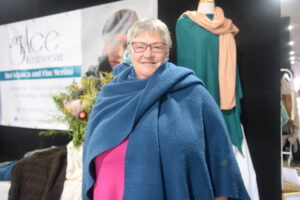
“Our sheep are bare breech and that helps stop fly strike.”
Bare breech is a phenotype in Merino sheep where the sheep are naturally hairless around the breech (under the tail) area, eliminating the need to mules them.
Anna said it was great to be back at the show after a two-year absence.
“The show is a great way to advertise your sheep and see the new genetics come through,” she said.
“It’s nice to get back and catch up with people. There are old friends here we only see once a year.”
Third time lucky for Border Leicesters
Third time’s the charm for the Border Leicester, which was meant to be the feature breed at the 2020 Australian Sheep and Wool Show before it was cancelled — and the 2021 show.
The biggest appeal of the breed is its ability to produce first-class, first-cross ewes, hence the slogan ‘the best dam rams’.
Jamie Buerchkner’s ewe won Supreme Exhibit for the Border Leicester breed.
“They are the best dams,” the Wagga Wagga region farmer said.
“In our area there has been a big change back to using first-cross ewes and composites.
“A lot of people have tried so many different ways of turning off sucker lambs and they’ve come back to the first-cross Border Leicester x Merino ewe.”
These first-cross ewes get a strong maternal instinct from their Border Leicester sire, making them excellent, reliable mothers for prime lamb producers.
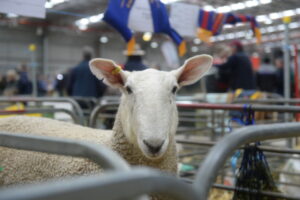
Jamie has been attending the show since 2006 as the Bauer Stud, but this year was his first time appearing as the new owner of the Retallack Stud.
“I haven’t won a Supreme Exhibit before but the Retallack Stud has,” he said.
“I bought the property and the stud in December and combined it with the Bauer Stud.”
Retallack Stud owners Graham and Isabella Grinter were the ones who got Jamie involved in the Border Leicester breed after he moved in next door 22 years ago.
The rest, they say, is history.
UltraWhite ram wins the cleanskin title
The cleanskin sheep breeds are booming in popularity as farmers turn towards the increasingly profitable lamb job and drop the hassle of wool.
Breeds like the Dorper and Australian White lead the sector, but neither won the Cleanskin Breeds Supreme Exhibit.
That honour went to an UltraWhite ram from Western Australia’s Hillcroft Farms.
The ram’s owners, Dawson and Greta Bradford, began developing the UltraWhite breed in 2005 by crossing Poll Dorset ewes and White Dorper rams.
When asked what set their champion UltraWhite ram apart, Dawson said it was the muscle.
“It’s the muscle that is so important and so often neglected, and the structure,” he said.
Before developing the UltraWhite breed, the Bradfords ran one of the highest performing Poll Dorset flocks in Australia and those genetics have carried over into their UltraWhites.
A black-headed Dorper won reserve.

